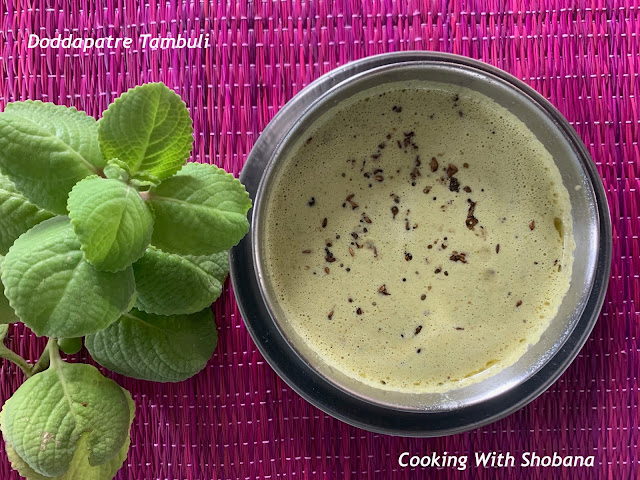BOMBAY CHUTNEY
As the whole world and we too in India wrestle with the Covid 19 pandemic, often we are forced to make do with what we have at home. All the ingredients, vegetables etc are not easily available as before. In these circumstances, dishes that can be made with a minimum of ingredients, that can be made fast, and can be made quite easily are in high demand.
One such dish is "Bombay Chutney" - a very tasty yet easy to make accompaniment for our breakfast items like dosas, idlis, pooris etc. Some serve Bombay Chutney with idlis as well but I personally don't prefer this combination.
How this got the name of "Bombay Chutney" is anybody's guess.
It is possible that " Bombay Chutney" as it is commonly called in the South was modeled after the popular Maharashtrian dish made of gram flour called Pithla, and hence got the name.
Irrespective of how or why it got the name, I can say for sure that this is a very tasty dish. We usually have this with dosas.

Ingredients:-
- Besan ( Chickpea Flour/Gram Flour), 2 heaped tbsp
- Large-sized Onion, 1
- Large-sized Tomato, 1
- Asafoetida (Hing), 1/8 tsp
- Ginger, finely grated, 1 tsp
- Green Chillies, 3
- Curry Leaves, 6-8
- Turmeric Powder, 1/4 tsp
- Salt, to taste
- Water, 3 cups ( including 1 cup for the besan slurry)
- Coriander Leaves, finely chopped, 1 tbsp - for garnish
For Seasoning:
- Mustard Seeds, 1 tsp
- Urad Dal, (Black Gram Dal), 1/2 tsp
- Channa Dal, ( Bengal Gram Dal), 1 tsp
- Oil, 1 and 1/2 tbsp
Method:-
Wash the onion, tomato, ginger and green chillies.
Chop the onion, and tomato,
Finely grate the ginger and slit the green chillies
Prepare the besan slurry : In a bowl, mix the besan with a little water to make a paste, making sure that no lumps are formed. Add 1 cup of water to make the besan slurry. Keep aside.
Heat oil in a thick-bottomed kadhai, and on medium heat add the mustard seeds,
When the mustard seeds splutter, add the urad dal and channa dal and sauté till the dal change colour and become golden
To this add the asafoetida, grated ginger, slit green chillies and curry leaves and sauté for a few seconds
Next add the chopped onion and sauté till the onion becomes translucent
Add the turmeric powder and a little salt and mix well
Now add the chopped tomato and cook covered on medium heat till they become soft and mushy
Add 2 cups of water and bring to a boil
Once it boils, lower the heat and add the besan slurry prepared earlier and mix well
Cook on medium heat for about 5 minutes or till the raw smell goes, stirring from time to time, so that it does not get burnt at the bottom
Check for salt and add only if required
Switch off the gas and garnish with finely chopped coriander leaves
Transfer to a serving bowl
Serve as an accompaniment to dosas, pooris or chapatis.
 |



















